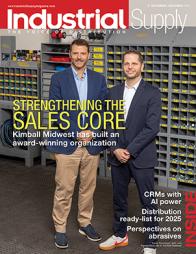Millennials and the changing work world

by Mary Jawgiel
Right now, for the first time in history, there are five generations in the workforce at the same time –
- Traditionalists (born before 1946) sometimes called the Silent Generation
- Baby Boomers – generally born circa 1946 to 1964
- Generation X – generally born circa 1965 to 1976
- Generation Y, aka the Millennials – generally born circa 1977 to 1995
- Generation Z – generally born circa 1996 to 2015
Each generation brings its own varying attitudes and expectations to each interaction, which can make working together a bit difficult at times. Many in the two older generations are, or will be soon, leaving and making even more room for younger workers.
The work force is being taken over by the young and, with that, comes change in just about every area. For a long time, Boomers have enjoyed being dominant in the workforce. Their rules and policies have given structure to the workplace. Now they are retiring and giving that distinction to the Millennials. Many researchers say that in just four short years, around 2020, Millennials will make up 50 percent of the work force as they head into their 30s. There are also statistics that indicate Generation Z will make up about 20 percent of the workforce by then.
These two upcoming generations bring new attitudes, values, and expectations that are changing the world of work, not just for them, but for everyone.
Make Friends with Flexibility
Perhaps one of the biggest changes the Millennials have brought to the workplace is flexibility. Ten years ago, it was hard to find those who telecommuted regularly or even occasionally. Employees were expected to be at the workplace and accessible to other employees and customers at a specific time. Now, it’s hard to find an organization, big or small, that doesn’t have some type of telecommuting option for their employees. There are even companies who are totally virtual – no office anywhere.
The younger generation rationalizes they are still accessible by cell phone, email, text, skype, etc., and willing to be on call even when they aren’t in the office. The trend is expected to grow in the future and some studies have shown more and more employees (regardless of age) liking the option. Some even feel they are more productive when they are working away from the office where they are not sidetracked by chatter, verbal requests or unplanned meetings.
Flexibility also includes taking time off during the day for an appointment and then coming back to work, or leaving early but working in the evenings or on the weekends either from the office or elsewhere. In the past, taking off time was recorded against your “time off bucket” but now there are other options to choose from.
Embrace Technology as the New Now
Technology is another area where change is occurring in the workplace. Technology is changing more rapidly than ever before and companies who don’t − or won’t − adapt to new technologies will find it hard to remain competitive and keep younger employees.
Millennials and Gen Z are digital natives. While Millennials are considered to be great adopters of technology, Gen Z tends to see technology as an extension of themselves – they have come to expect technology to make their life easier and that expectation extends to the workplace. They have grown up with smart phones and tablets and can’t imagine not using their gadgets. Indeed, they find an old-fashioned telephone call to be not only an irritating interruption, but also an inefficient waste of their multi-tasking time. They embrace the latest and greatest and they actually know how to make apps and programs work to achieve their goals.
In many cases, the technology they are asked to use in their workplace doesn’t meet their definition of speed and ease, so they are bringing in their own devices in order to work more efficiently. They don’t understand why their workplace computer can’t do what their smart phone can – why there isn’t an app to help them find that bit of knowledge they need now. BYOD (bring your own device) is allowed by some organizations in an effort to keep their younger employees from leaving. That policy can create headaches for IT departments, but in many cases is increasing productivity among employees.
Complete Transparency
Not too long ago, employers shared information about how the company was doing and other information only with senior managers and only on a need-to-know basis. Your younger employees want to be “in the know” about how their organization is doing right now.
Gone are the days when companies can hide low sales figures, bad test results on a new product, or other unpleasant news from their employees if they want to keep the best and brightest. Younger generations can accept that not all results will be glowing, but cannot imagine why managers wouldn’t make the issue known among employees in an effort to find the best solutions from their teams. This is normal to them.
Green and Responsible
Does your company have a mission beyond serving investors’ needs to line their pockets? Younger employees want to make sure the company they work for is environmentally friendly and socially responsible. They want to make a difference and they want the company they work for to do the same. More and more organizations are getting involved in their communities by developing programs that allow their employees to mentor teens, build houses for those less fortunate, serve at food banks, and complete other good works on the company’s time. Some successful companies have made giving back a part of every dollar they earn.
More Changes Coming Most Likely
These are only some of the ways workplaces are changing to accommodate younger employees. I’m sure you can come up with many more ways your workplace has changed over the past 18 to 20 years with the advent of those born during the 1980s and after joining the workforce. Their desire to obtain work-life balance, embrace and use technology to create efficiencies, know their employers inside and out, and be part of the greater good has brought about many changes in how we all work. Perhaps the biggest change is that employers are taking advantage of the talents and ideas coming from their youngest and newest.
 Mary Jawgiel is ICP program director for the PTDA Foundation, whose life-long passion is working with young people. For more insights on recruiting, hiring, onboarding, training and retaining Millennial employees in the distribution industry, subscribe
Mary Jawgiel is ICP program director for the PTDA Foundation, whose life-long passion is working with young people. For more insights on recruiting, hiring, onboarding, training and retaining Millennial employees in the distribution industry, subscribe
to the ICP Talent Tipsheet.
This article originally appeared in the March/April 2016 issue of Industrial Supply magazine. Copyright 2016, Direct Business Media.













